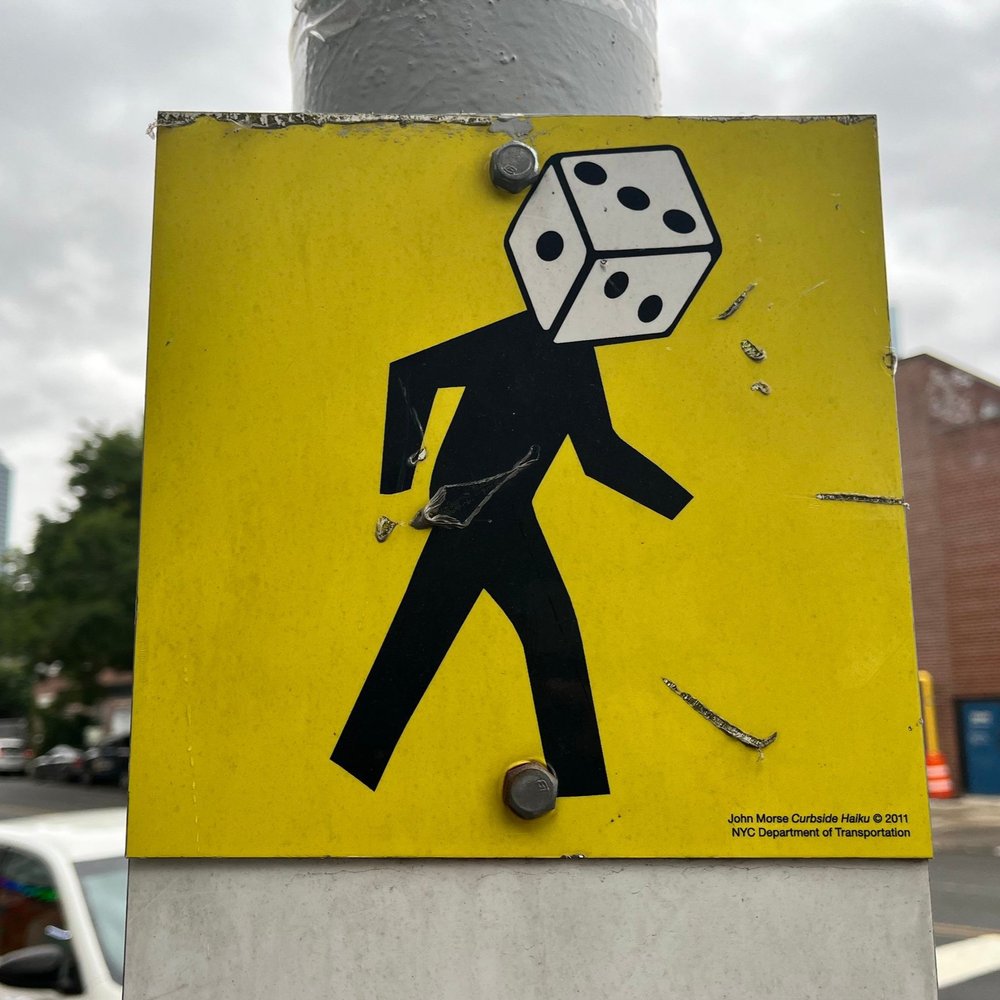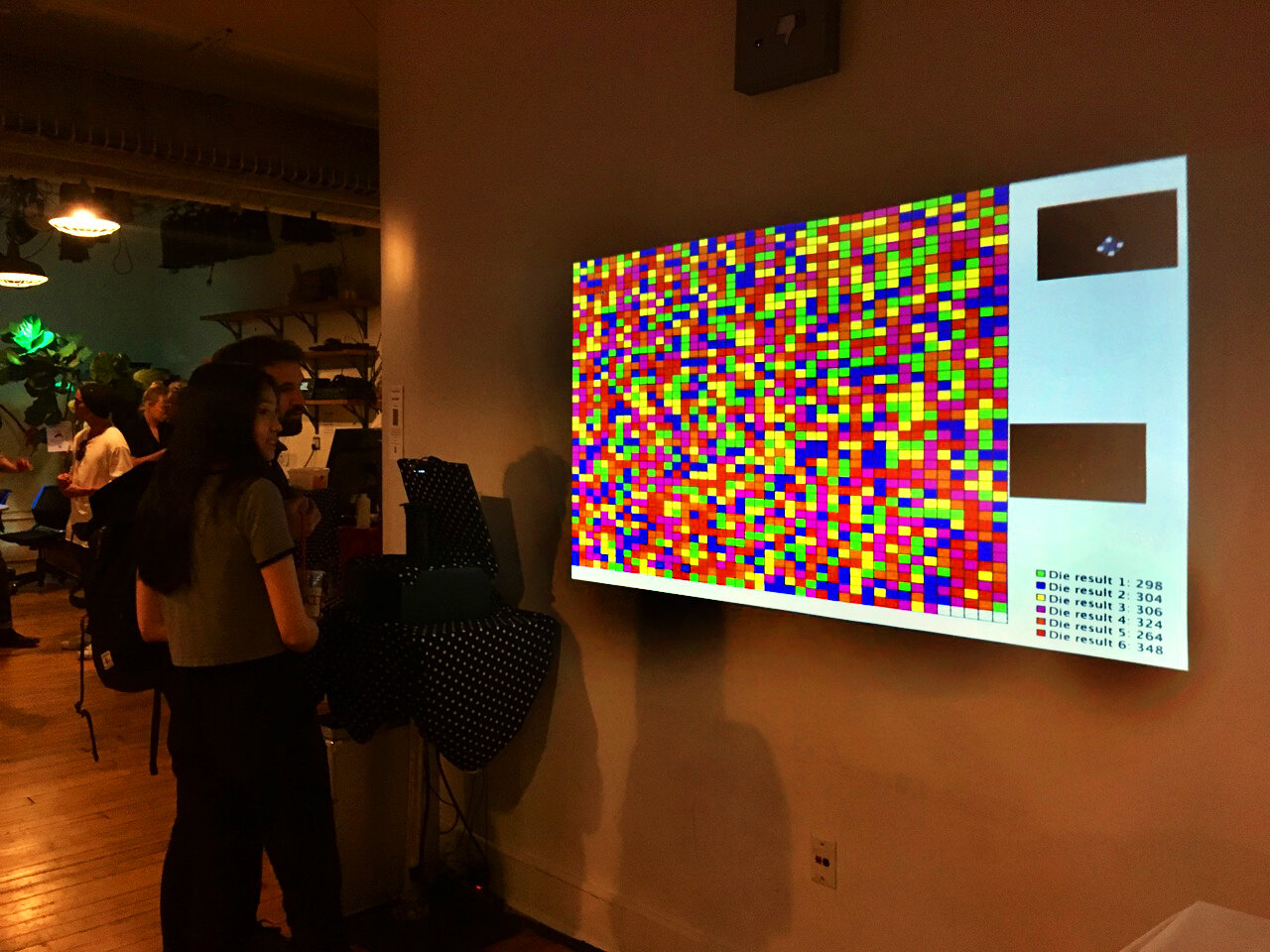slow numbers
“Everybody Knows that the dice are loaded, everybody rolls with their fingers crossed” Leonard Cohen
“But how loaded dice are?” Nicolas Sanin
Slow numbers, is a project about the nature of randomness. The idea is to look at different random generation methods, to see the nature of this outcomes. As you can see, we are starting with the most beautiful and traditional one: Dice!
Part of the work in progress is collecting or “harvesting” dice results from different dices. By this, I mean the sequence of results after repeatedly rolling each die.
is there such a thing as chance? or different chances?
Slow numbers, is a project about the nature of randomness.
The idea is to look at different random generation methods, to see the nature of this outcomes.

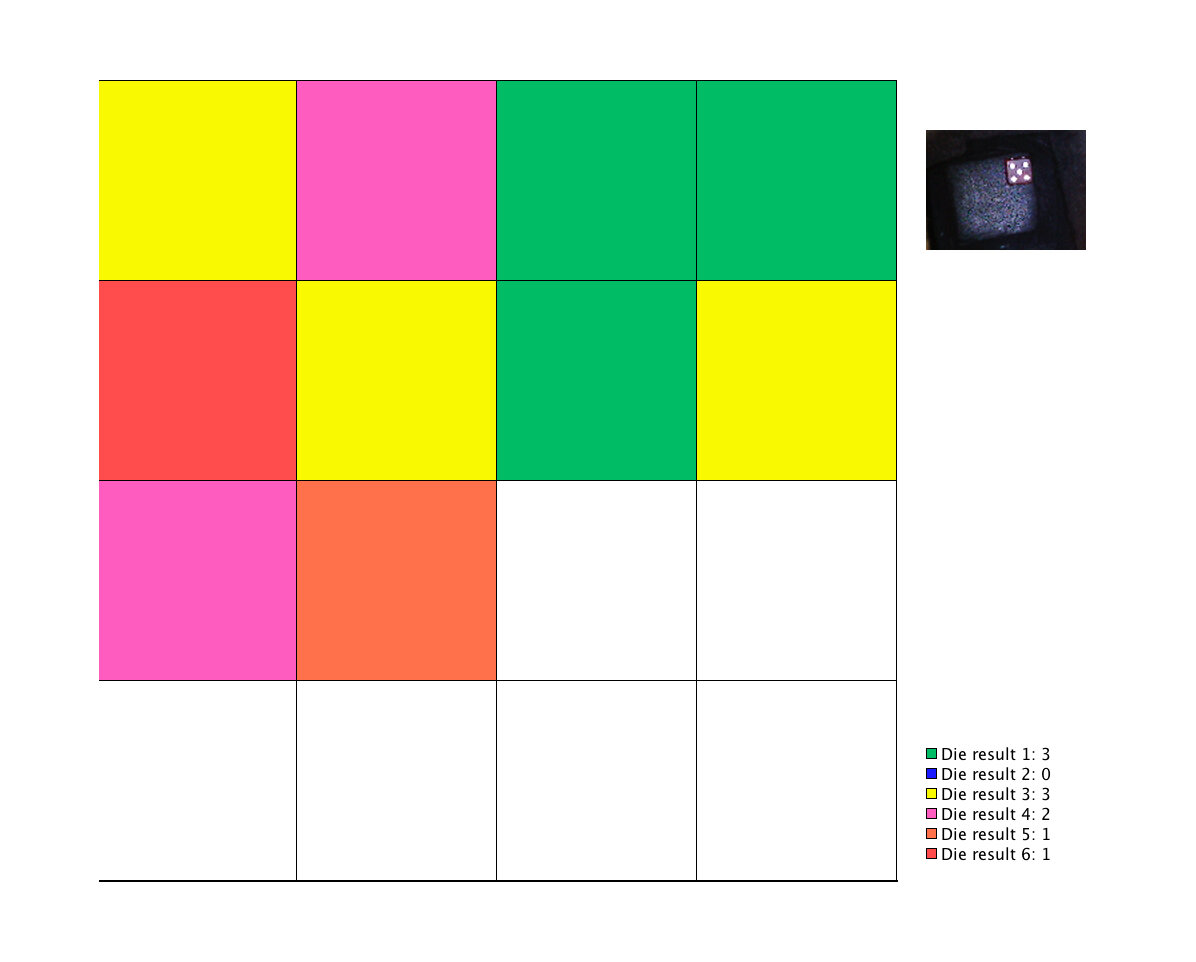
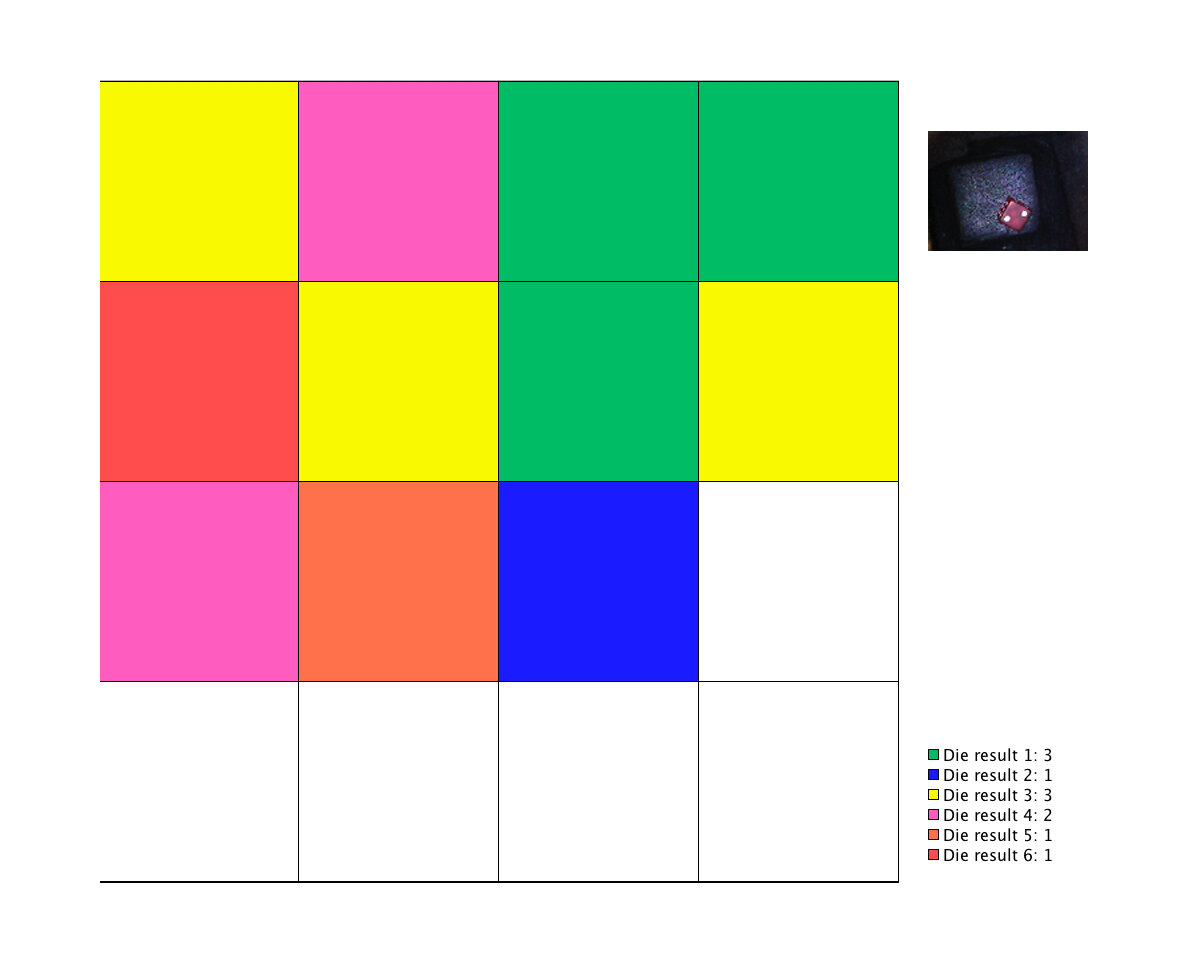


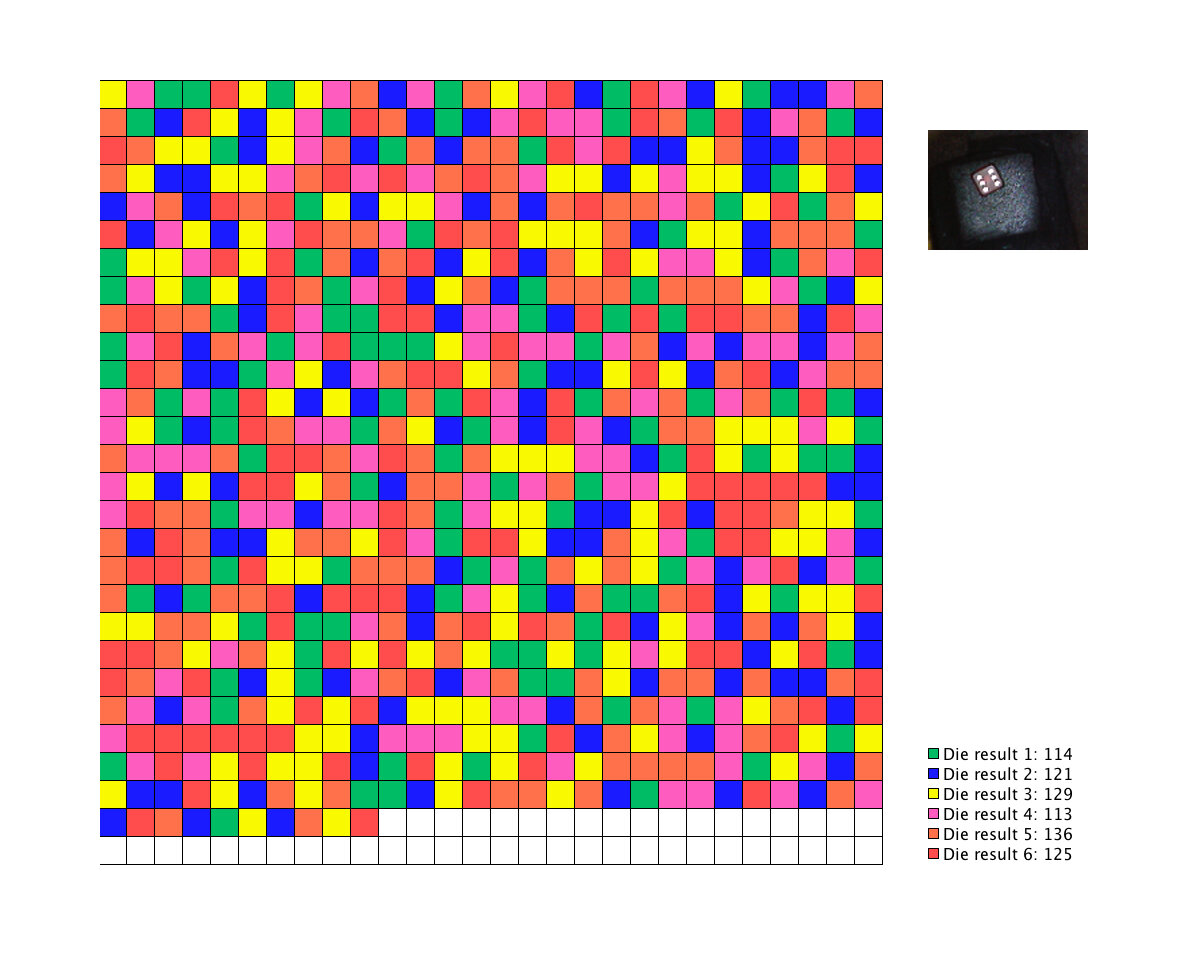
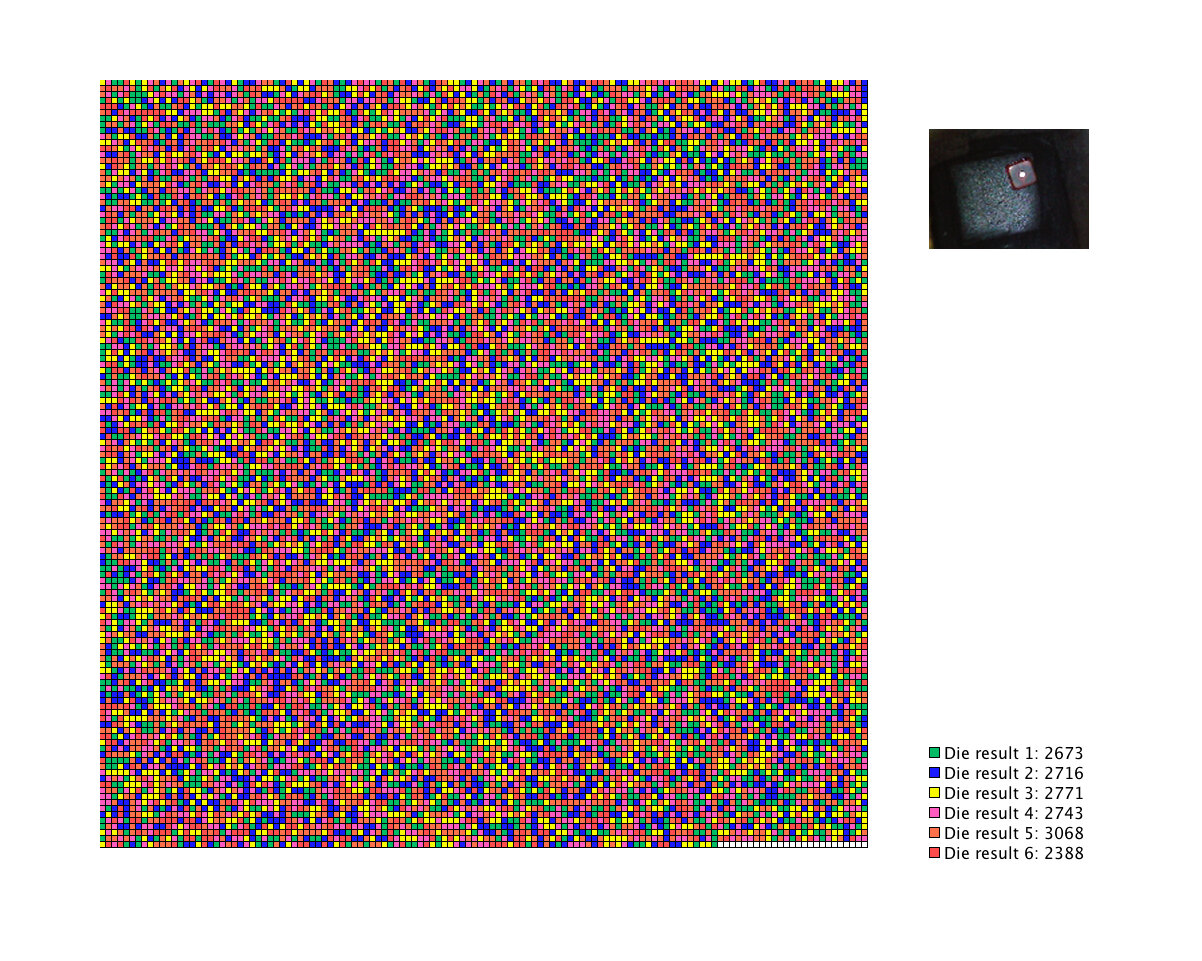
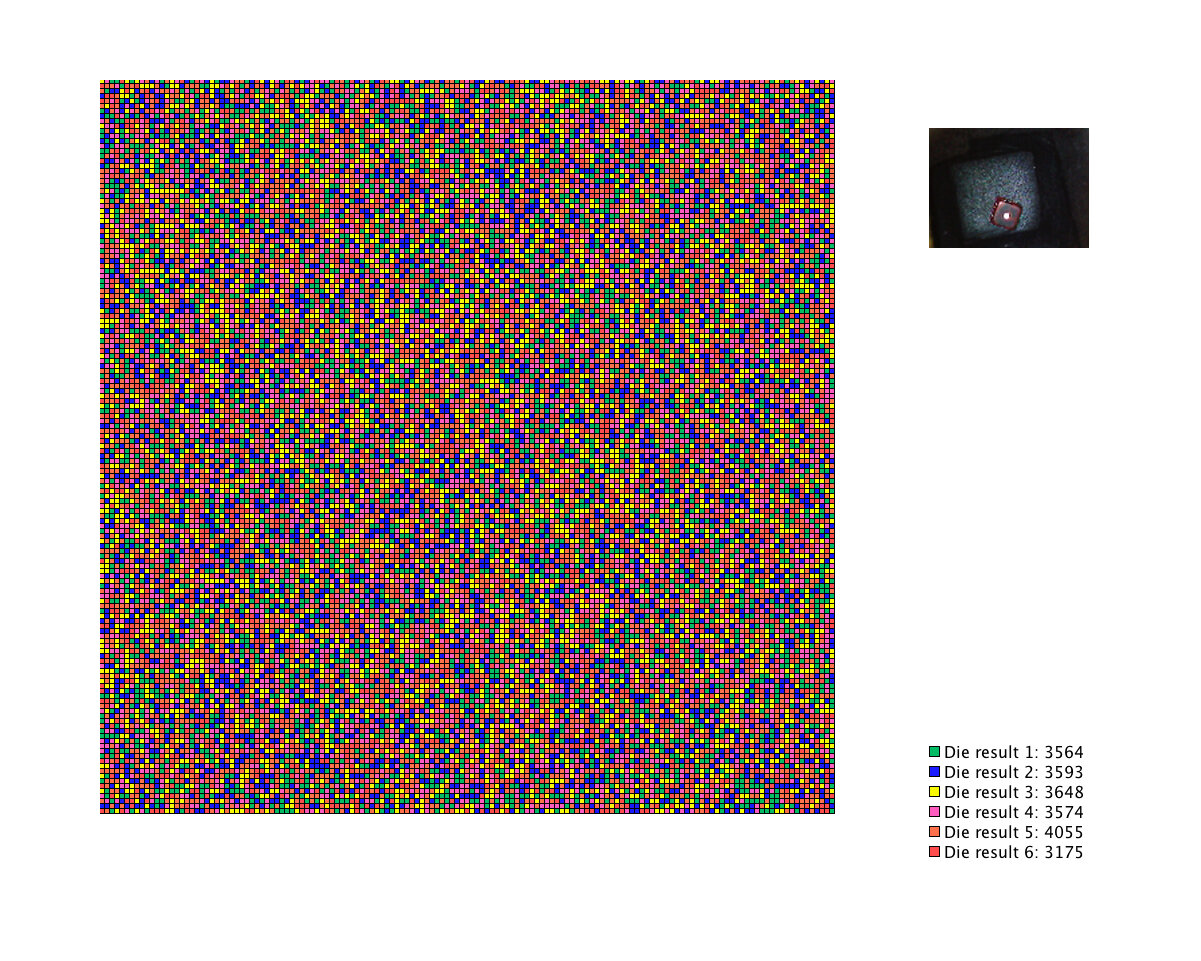
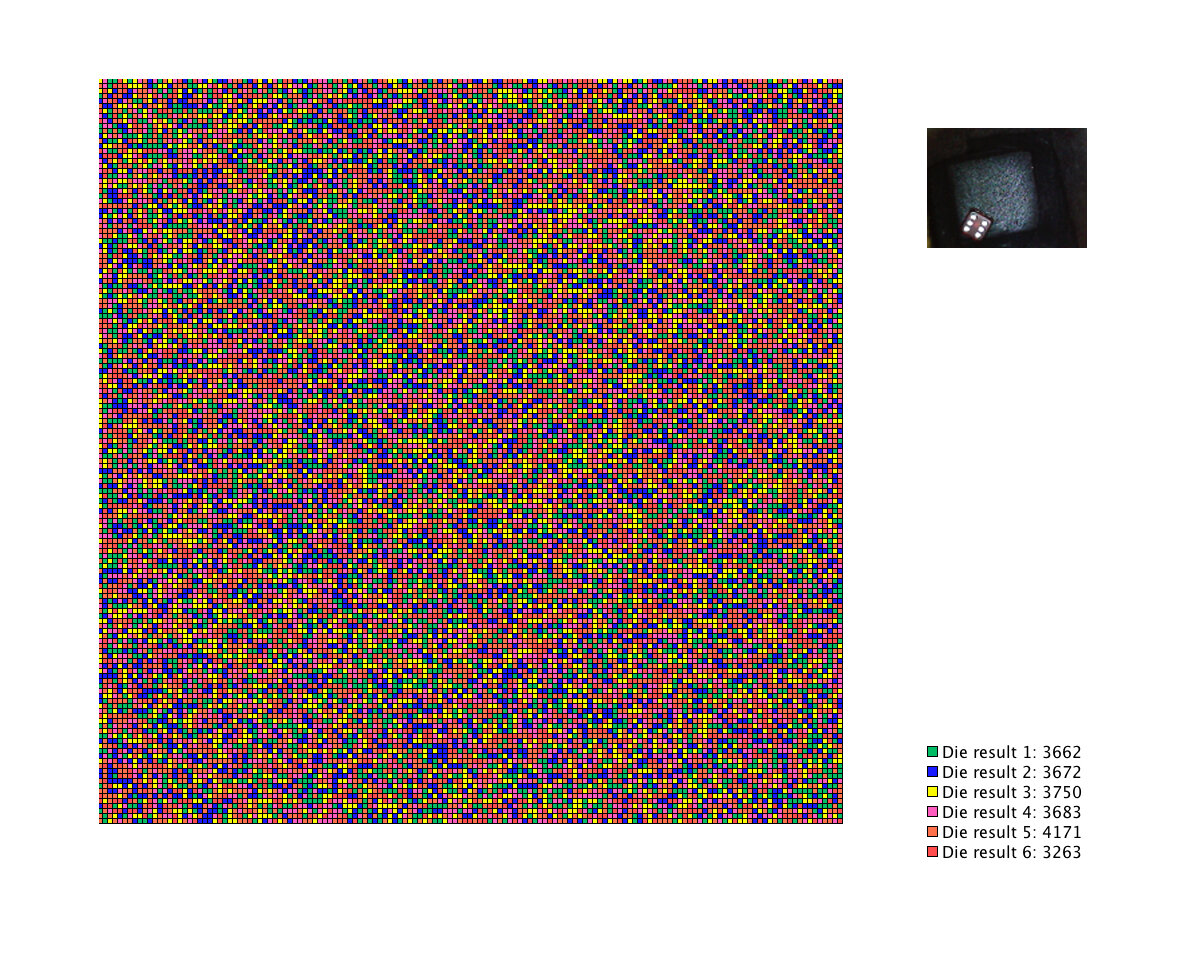
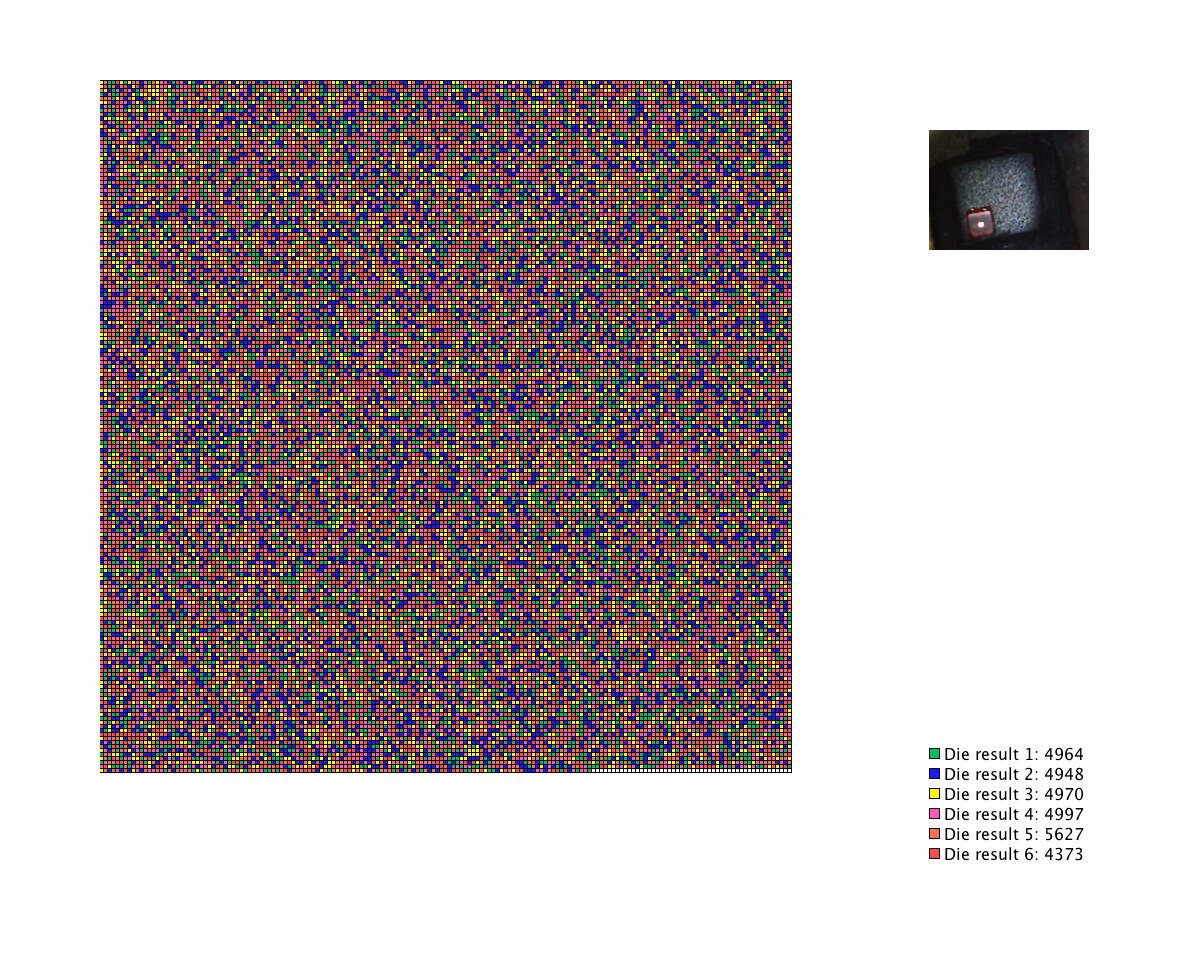
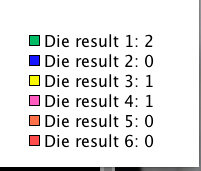
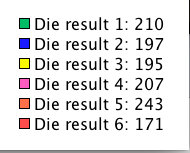
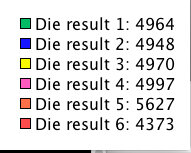
As you can see, we are starting with the most beautiful and traditional one: Dice!
That why I made my own automatic dice roller. It rolls dice by using sound waves that cause a speaker to shake a container with a die inside. A program control the dice rolling cycle, triggering the sound for each dice roll. Also makes the computer vision system read the result using a camera, and store the amount of rolls per number. And finally visualize it using a colored digital display. The idea is to roll each die for more than 4000 times, so we can see if there’s a bias to certain numbers on each die. This, to flirt with the idea of probability about revealing a glimpse of truth by collecting these results over time, from a “similar event”. Another interesting element that we are exploring int this project, is the speed of random generation systems. And also the equation between speed and degree of unpredictability of the outcomes from each method. Rolling dice by hand is a slow process. Rolling dice using an automatic dice roller is faster. A computer simulating dice results with a coded algorithm is way faster than both. But if we step back, it’s actually very slow, comparing it from the real world outside of this systems.
As of today, result sequences from more than 30 dices from diverse manufacturers, including dice used in casinos form las Vegas, have been collected . These sequences are there for anyone to use them as they wish. You can find them at the github section from Slow numbers.
https://github.com/nicosanin/Slow-numbers
Part of the experiments done in this project has to do with harvesting results by the written algorithms used to simulate random outcomes. Complex mathematical equations, that are used for many practical purposes, including password generation, music shuffling among many others. Algorithms that seem very random at first sight, but maybe after some time and a careful look, start to reveal their artificial nature.
From a more poetic point of view, Slow Numbers is also a space to think about concepts like infinity, and the beauty of inefficiency. Also a place to question certainties. To speculate and raise silly questions. To challenge authorities, like the written truths, and logic’s of probability. Like technology as a myth. Is an ancient die better than the latest computer as a random generator? or a human mind can give more unpredictable random outcomes than both of those generators?. And what do we mean when we say a “better random” anyway? . From a formal aesthetic point of view, the decision is to create an elegant and simple framework, isolated from the rest of reality, to allow the battle (or dance) between order and chaos take place.
The next steps will be using other alternative random generation methods, to reveal the different nature of random outcomes each has to offer. Methods like human simulated random results, and physical random generation methods using unconventional ways to produce unpredictable outcomes. These methods involve natural means, and computers to abstract these as numerical sequences, using audio and vision sensors and sound processing and computer vision. In some ways, similar to methods used like lava lamps, and Geiger counters, that will be great to compare with. It’s a lot of work ahead! I might be slow, but I never quit, so I will be posting the results form this experiments as soon as this next steps are done.
I know it’s only rolling dice, but i like it!,like it, yes i do!!!
A quick phone documentation of the installation at the I.T.P Spring Show 2019.
Slow numbers was started as the thesis project for the Master in interactive telecommunications at ITP in NYU.
It’s the continuation of the previous experiments with chance. In the following video, I did my best to condense the process that finally led to make Slow numbers a reality and not only an impossible dream! And this is just the beginning!
In the following presentation you can hear about the process of this project.
I this video we can see why and how the dice roller system work. And some context about this project, that is under development.
Some thoughts about Dice
Dice are beautiful as an example of good design. My bet is that an alien intelligence would understand their concept faster than many other artifacts they could find if they would land in our beloved and endangered planet. And they would love them as I do! Their form and functionality match so well, that we don’t need too much explanation to use them, and to understand the complex, interesting and metaphysical question they are addressing: is “randomness” real? Or it’s just a word to disguise our incapability to fully explain events from a logical and rational point of view.
Dice are designed to be rolled, so once they land on a surface and stop moving, we can look at their upper surface and get a message. A message that can be in the form of one dot, two dots, three dots, four dots, five dots or six dots. The idea is that we will only know the message, once the die is cast. In theory, this is impossible to know for certain, but this is questionable. According to the general idea of probability, you could get close to make a prediction, based on enough collected data, obtained from rolling the same dice in a similar way of rolling it. But there’s also a concept of each dice roll being a discrete event, meaning that it won't be determined by a previous roll or result. Even if there is a tendency in the die, each roll of the ide is an independent event. There are a lot of subtleties around this problem, that I’m excited to explore. I don’t want to believe blindly in the authority of probability, science or religion. I want to let the dice speak for themselves! And to create a dialogue with the concepts around it that come from probability, religion, physics, metaphysics, mathematics, speculation, and philosophy, among other possible ways of thinking. After a great deal of die rolling until now, my sense is that we will never de able to predict any time soon the next roll, even having the statistical odds from that specific die in our hands. An my guess is that we tend to think of objects as permanent things. We are forgetting that there is a great force we might not be taking into account: the force of transformation. The daughter of time. The die seems to be changing with every roll. The air surrounding it also changes its density “randomly”.
How “random” dice are? How random can they be? How can I test them and observe how they are creating what we call “random” results? Can we understand enough to be able to predict the next roll? Can a computer learn how to do this? If so, how accurate can it be? Would it beat us on a gambling session? These are practical questions we can address using technology like electronics, computers and off course, dice! (Which could arguably or poetically be understood as an analog, electricity-less computer or machine).
People, including me, take the word “randomness” for granted. When I roll a die I do it assuming it will give me an unpredictable or “random” outcome. This also happens with the use of computers. And when we use our phone or music player in the Shuffle mode. We want to believe the randomness they produce is “perfect”. But according to Donald Knuth:
“Many random number generators in use today are not very good. There is a tendency for people to avoid learning anything about such subroutines; quite often we find that some old method that is comparatively unsatisfactory has blindly been passed down from one programmer to another, and today’s users have no understanding of its limitations.”
— Donald Knuth; The Art of Computer Programming, Volume 2.
As a visual artist, I have done different experiments using dices, roulettes and other means of trying to “create random results”. I have been able to visualize and reveal the nature of these random generators by doing these experiments. All of these experiments were done with analog technology like painting, pencil, paper, ink, and hands, without the use of electronics and computers. These experiments have very interesting and beautiful results, but I could go way farther using computers and electronics. This is of course nothing new. It has been done in science experiments and by the dice maker industry, and curious individuals that are often difficult to categorize. But I want to address this from the point of view of the arts. That means for me, to look into it having aesthetical interests that go in hand with conceptual questions.
I think “randomness” is the border between the unknown, reason and faith. It's a concept that is so mysterious, that has been addressed by science, art, philosophy, religion, art and other areas of thinking. What I find to be beautiful is that none of them have a final word to explain it, to deny it or to affirm it is real. It has also been part of different mythologies in cultures around the world. Probably during most of human existence.
